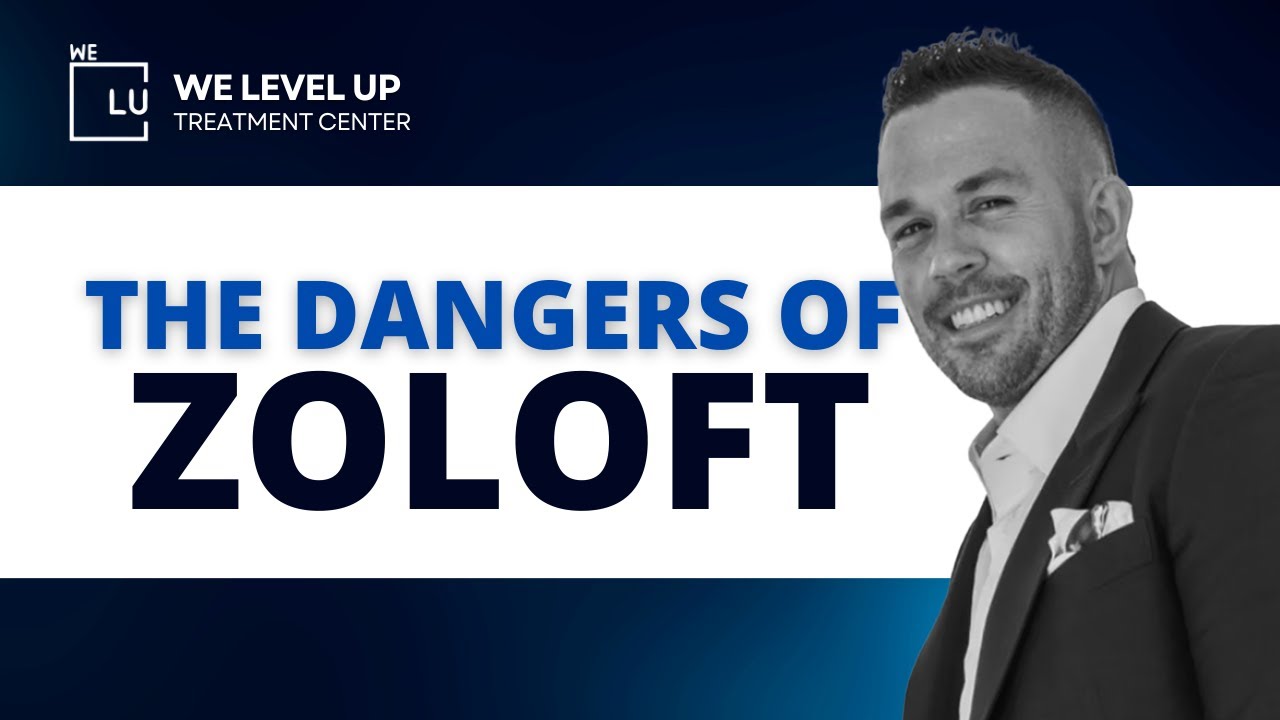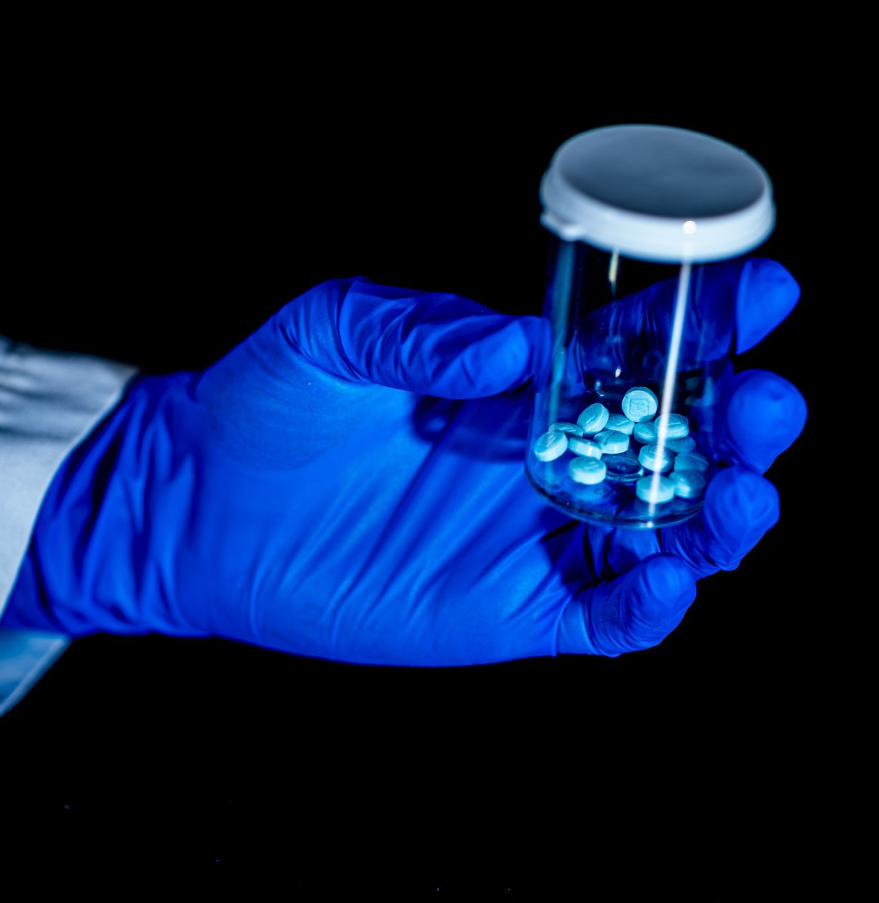Tramadol oral tablet is a prescription medication provided as an immediate-release and extended-release tablet and an extended-release oral capsule. Immediate-release formulations deliver the medication quickly into the body, while extended-release variants release it gradually over time.
Both forms of tramadol oral tablets are available as generic drugs. The immediate-release tablet is also sold as the brand-name drug Ultram. Typically, generic drugs are more cost-effective than their brand-name counterparts. However, they might not always be offered in all strengths or versions similar to the brand-name drug.
Tramadol is classified as a controlled substance, necessitating careful monitoring by a doctor. These medications require close medical supervision due to their specific use in treatment, potential for misuse, and risk of dependence if misused.
Tramadol Dosage Guide
Acute Pain
Dosage Guidelines For Adults (17 years and older):
- For immediate pain relief: 50 to 100 mg orally every 4 to 6 hours, as necessary.
For patients not needing immediate pain relief:
- Initial dose: 25 mg orally once daily.
- Increase gradually by 25 mg every 3 days to reach 25 mg four times daily.
- Then, augment by 50 mg every 3 days as tolerated.
- Maximum daily dosage: 400 mg.
Additional points to consider:
- Tailor doses individually; slow titration may enhance tolerability.
- Tramadol use in pediatric patients is cautioned by the US FDA; labeling for immediate-release tramadol refers to patients aged 17 years and older.
- Avoid tramadol use after tonsillectomy/adenoidectomy or in obese adolescents up to 18 years or those with conditions that may elevate the risk of breathing issues.
Usage: Intended for the treatment of severe pain requiring an opioid analgesic when other therapies are insufficient.
Chronic Pain
Typical Adult Dosage for Chronic Pain
Extended-Release (ER): For individuals aged 18 years or older (without prior tramadol use): Begin with a single 100 mg oral dose per day. Adjust in increments of 100 mg every 5 days to achieve a suitable dose with minimal adverse effects. Maximum Daily Dose: 300 mg
For Patients Currently Using Immediate-Release (IR) Tramadol:
Determine the 24-hour IR tramadol requirement. Start ER treatment with a total daily dosage rounded down to the nearest 100 mg increment, taken orally once a day.
Switching from OTHER Opioids: Cease all other continual opioid medications before starting tramadol therapy. Commence with a 100 mg ER oral dose once a day. Gradually adjust by 100 mg increments every 5 days to reach a suitable dose with minimal adverse effects. Maximum Daily Dose: 300 mg
Acute Pain
Typical Elderly Dosage for Pain
Dosage selection should be approached cautiously, typically starting at the lower end of the dose spectrum.
75 years and older: Maximum Immediate-Release dose: 300 mg per day
Considerations:
Respiratory depression is the primary risk in older patients using opioids; incrementally adjust the dose and closely monitor for indications of central nervous system and respiratory depression. Considering this medication is significantly eliminated through the kidneys, consider monitoring renal function.
Chronic Pain
Standard Dosage for Chronic Pain in Older Adults
When determining dosage, exercise caution, typically initiating treatment at the lower end of the dose spectrum.
For individuals aged 75 and older:
Maximum Immediate-Release dosage: 300 mg per day
Considerations:
Elderly patients taking opioids face a higher risk of respiratory depression; therefore, gradually adjust the dose and carefully monitor for any indications of central nervous system and respiratory depression. Considering this medication is primarily eliminated through the kidneys, consider monitoring renal function.
Tramadol is not recommended for use in pediatric patients following a tonsillectomy and adenoidectomy, specifically in adolescents up to 18 years old. Additionally, caution should be exercised in adolescents up to 18 years old who are obese or have conditions that might heighten the risk of respiratory problems.
If you or someone you know is suffering from Tramadol addiction, the We Level Up Treatment Centers can help. Speak with our hotline specialists and discover the support and professional-accredited addiction treatment programs we offer.
How Do You Take Tramadol?
- Standard Tablets and Capsules: Swallow each tablet or capsule whole with a glass of water.
- Drops: Mix the drops into a glass of water, then drink the entire glass contents.
- Soluble Tablets: Dissolve each tablet in a drink of water (more than a sip) and consume it.
- Tablets that Dissolve in the Mouth: Ensure dry hands before handling the tablet. Place the tablet on your tongue and allow it to dissolve without chewing. After it dissolves, swallow or drink water. If preferred, dissolve the tablet in a glass of water.
- Slow-Release Tablets and Capsules: Take slow-release tramadol tablets and capsules whole with water. These variants gradually release the medicine into your system over 12 or 24 hours, taking longer to initiate but providing extended relief. They are prescribed for prolonged pain management.
When Do I Take Tramadol?
The timing of tramadol intake depends on the specific type prescribed:
- Standard tablets and capsules: Typically taken 3 to 4 times a day.
- Drops: Usually taken 3 to 4 times daily.
- Slow-release tablets and capsules: Generally taken once or twice daily.
Individuals aged 65 or older, or those with liver or kidney issues, may be advised by their doctor to take tramadol less frequently.
It’s recommended to take tramadol consistently daily and evenly distribute the doses. For instance, if you’re
What is Tramadol Used For?
Tramadol is a prescribed opioid for managing moderate to moderately severe pain. In the United States, over 43 million tramadol prescriptions were issued in 2016, with 41 million in 2017.
Similar to other pain-relieving prescriptions, tramadol functions by binding to opioid receptors in the brain, spinal cord, and other body parts. This binding triggers neurochemical events, reducing the perception of pain signaling and enhancing dopamine release, creating feelings of reward and pleasure that can reinforce its use.
Apart from its opioid effects, tramadol acts as a monoamine reuptake inhibitor, akin to certain antidepressants, hindering the reuptake of norepinephrine and serotonin into nerve terminals. This dual mechanism is believed to contribute to its pain-relieving properties.
Immediate-release tramadol offers effects lasting roughly 4–6 hours, while the extended-release variant provides relief for about 12-24 hours.
Warnings on Tramadol
This medication is subject to FDA-mandated boxed warnings highlighting significant risks.
The drug is accompanied by boxed warnings that underscore several critical risks identified by the Food and Drug Administration (FDA). These warnings are designed to inform both physicians and patients about the potential dangers associated with the medication.
- Addiction, abuse, and misuse: Tramadol can lead to opioid addiction, misuse, and abuse, increasing the risk of overdose or even death. Strict adherence to your doctor’s prescribed dosage is crucial to mitigate these risks.
- Slowed or stopped breathing: This drug can depress breathing, potentially resulting in fatal consequences if left unattended. This risk is most pronounced during the initial three days of starting the medication or altering the dosage.
- Accidental ingestion: Even a single accidental ingestion, particularly by children, can be fatal. It’s imperative to keep this drug out of children’s reach at all times.
- Life-threatening effects in children: In certain instances, this drug may be rapidly processed in children, leading to reduced breathing and potential fatality. Therefore, it should not be administered to children under 12 or those under 18 with specific risk factors or recent tonsillectomy or adenoidectomy.
- Neonatal opioid withdrawal syndrome: Prolonged use during pregnancy can result in withdrawal symptoms in newborns, which can be life-threatening. Symptoms include irritability, hyperactivity, disrupted sleep patterns, high-pitched crying, tremors, vomiting, diarrhea, and failure to gain weight.
- Interactions with specific drugs: Combining tramadol with certain medications can cause severe, potentially life-threatening effects, such as increased tramadol levels leading to seizures or serotonin syndrome. Such interactions can also reduce tramadol’s effectiveness or prompt opioid withdrawal symptoms. Drugs that pose these risks include amiodarone, quinidine, erythromycin, ketoconazole, ritonavir, and similar medications.

Skip To:
Learn More:
- Tramadol Withdrawal Symptoms, Timeline, & Detox Treatment
- Tramadol vs Hydrocodone: Are They Similar? Which one is Better For Pain?
- Tramadol vs Oxycodone: Which is Better? Side Effect Comparison
- Is Tramadol A Narcotic?
- Tramadol in Pregnancy
- Tramadol Serotonin Syndrome
- Vicodin vs Norco, What’s The Difference & How Do They Compare?
- How Long Does Hydrocodone Stay in Urine?
- What is Norco? Norco Drug For Severe Pain Information
- The Dangers of Hydrocodone Addiction, Symptoms & Treatment
- Hydrocodone Side Effects, Uses, Addiction and More
- Opiate Withdrawal
- Opioid Withdrawal Timeline
- Opioid Withdrawal Symptoms
- Interactions with benzodiazepines or CNS depressants: Co-administration of tramadol with benzodiazepines, CNS depressants, or alcohol can lead to severe side effects such as extreme fatigue, respiratory depression, coma, or even death.
- Opioid Risk Evaluation and Mitigation Strategy (REMS): Given its potential for abuse and addiction, the FDA requires a REMS program. This mandates the drug manufacturer to develop educational programs regarding opioids’ safe and effective use for healthcare providers.
Get Help. Get Better. Get Your Life Back.
Searching for Accredited Drug and Alcohol Rehab Centers Near You? We Level Up Texas Is Opening Soon!
Even if you have failed previously and relapsed, or are in the middle of a difficult crisis, we stand ready to support you. Our trusted behavioral health specialists will not give up on you. When you feel ready or just want someone to speak to about therapy alternatives to change your life call us. Even if we cannot assist you, we will lead you to wherever you can get support. There is no obligation. Call our network hotline today.
FREE Addiction Hotline – Call 24/7
Signs and Symptoms of Tramadol Overdose
Tramadol functions by attaching to specialized receptors in the brain, disrupting pain signals, and influencing areas of the brain responsible for regulating reward responses and breathing.
Consuming an excessive amount of tramadol can lead to severe, potentially life-threatening side effects.
Although tramadol has a mild effect on the typical opioid receptor (mu receptor) compared to other opioids, it also produces its pain-relieving effects through interactions with norepinephrine and serotonin neurotransmitters.
Symptoms of a tramadol overdose might include:
- Constricted pupils.
- Excessive drowsiness.
- Slowed breathing.
- Reduced heart rate.
- Weak muscles.
- Clammy skin.
- Loss of consciousness.
Tramadol poses a considerable risk of seizures when taken in doses surpassing prescribed limits.
Get Help. Get Better. Get Your Life Back.
Searching for Accredited Drug and Alcohol Rehab Centers Near You? We Level Up Texas Is Opening Soon!
Even if you have failed previously and relapsed, or are in the middle of a difficult crisis, we stand ready to support you. Our trusted behavioral health specialists will not give up on you. When you feel ready or just want someone to speak to about therapy alternatives to change your life call us. Even if we cannot assist you, we will lead you to wherever you can get support. There is no obligation. Call our network hotline today.
FREE Addiction Hotline – Call 24/7Is Tramadol Subject to Misuse?
The World Health Organization considers tramadol a safe pain-relief medication when used responsibly and under medical guidance.
Despite its therapeutic use, tramadol has been misused or diverted from its intended medical purpose. The FDA modified its drug labeling to highlight its potential for abuse. This alteration notes the drug’s capacity for both psychological and physical dependency, with a heightened risk among individuals with histories of substance abuse, chronic pain patients, and those grappling with opioid addiction.
About 1.7 million individuals, approximately 0.6% of the population aged 12 and above, abused tramadol in the previous year, as per 2017 statistics.
One of the gravest dangers linked to misuse is the potential for a fatal overdose. Symptoms of tramadol overdose encompass seizures, constricted pupils, low blood pressure, slowed heart rate, cardiac arrest, decreased breathing, cold and clammy skin, severe drowsiness, stupor, and coma. This risk escalates significantly when tramadol is combined with other central nervous system depressants like alcohol, benzodiazepines, or other opioids.
In case of an overdose, immediate medical assistance is imperative. If you observe signs of an overdose in someone, swiftly dial 911 for emergency aid.

Tramadol Addiction – Related Statistics
Despite declining prescription rates, opioid overdose deaths remain a significant public health concern. Many opioid-related deaths are attributed to the misuse of prescription opioids or illicit opioids, such as heroin and fentanyl. Unfortunately, Norco hydrocodone is included in the problem.
There is a need for increased access to evidence-based treatments for opioid use disorder, such as medication-assisted treatment (MAT) and behavioral therapies, to address the addiction crisis effectively.
1.6 Million
An estimated 1.6 million people in the US were reported to have opioid use disorder in 2019, indicating a diagnosed addiction to opioids.
Source: NCBI
70%
In 2020, over 69,000 drug overdose deaths in the US, and approximately 70% involved opioids.
Source: CDC
18%
In 2019, only about 18% of people with opioid use disorder received specialty treatment for their addiction.
Source: NSDUH
Bioavailability
Bioavailability refers to the extent and rate at which a drug or substance is absorbed into the bloodstream or becomes available at the site of action after administration. It measures the amount of the administered dose that enters the systemic circulation and can produce an effect.
Regarding bioavailability, tramadol hydrochloride tablets boast a 75% bioavailability, whereas extended-release tramadol hydrochloride tablets range between 85% to 90%.
Start a New Life
Begin with a free call to an addiction & behavioral health treatment advisor. Learn more about our dual-diagnosis programs. The We Level Up treatment center network delivers recovery programs that vary by each treatment facility. Call to learn more.
- Personalized Care
- Caring Accountable Staff
- World-class Amenities
- Licensed & Accredited
- Renowned w/ 100s 5-Star Reviews
We’ll Call You
Interactions of Tramadol With Other Drugs
Potential interactions with other drugs are a critical concern when taking tramadol or hydrocodone. These interactions could lead to severe side effects, including breathing problems, coma, or even fatality. Therefore, informing a healthcare professional about all ongoing medications and supplements is crucial before starting tramadol or hydrocodone.
Combining alcohol or illicit drugs with tramadol or hydrocodone can result in hazardous or fatal reactions.
Numerous medications and supplements might interact adversely with tramadol and hydrocodone, such as:
- Antibiotics.
- Antidepressants.
- Anti-anxiety medications.
- Antipsychotics.
- Allergy medications (antihistamines).
- Benzodiazepines.
- Cold and cough medicines.
- Fungal infection medications.
- Heart rhythm medications.
- HIV medications.
- Irritable bowel medications.
- Laxatives
- Muscle relaxants.
- Nausea medications.
- Parkinson’s disease medications.
- Prescription and over-the-counter pain relievers.
- Sedatives or tranquilizers.
- Seizure medications.
- Sleeping pills.
- St. John’s Wort.
- Tryptophan.
- Ulcer medications.
- Urinary problem medications.
When these drugs include acetaminophen along with tramadol or hydrocodone, additional concerns arise. Consuming extra acetaminophen alongside these medications could lead to liver damage.
Various medications, vitamins, and supplements might provoke dangerous effects when taken with hydrocodone or tramadol. Hence, informing a healthcare provider about all substances being taken is crucial.
Gradual Reduction for Safer Withdrawal
Healthcare experts often advise individuals to decrease their tramadol dose rather than abruptly stopping it gradually. Tapering off tramadol can potentially minimize withdrawal side effects and reduce the risk of an overdose. Additionally, this approach can lower the chances of an overdose when someone returns to their previous dose after detox.
Although weaning off tramadol may extend the withdrawal timeline, it generally ensures a more comfortable and secure process. Collaborating with healthcare providers helps determine the safest frequency for reducing the dose during tramadol withdrawal.
Opening Soon! First-Class Facilities & Amenities
World-Class High-Quality Addiction & Mental Health Rehabilitation Treatment
Coming Soon! Rehab Centers TourRenowned Addiction Centers. Serene Private Facilities. Inpatient Rehab Programs Vary.
FREE Addiction Hotline – Call 24/7Proven recovery success experience, backed by a Team with History of:
15+
Years of Unified Experience
100s
5-Star Reviews Across Our Centers
10K
Recovery Success Stories Across Our Network
- Low Patient to Therapist Ratio
- Onsite Medical Detox Center
- Comprehensive Dual-Diagnosis Treatment
- Complimentary Family & Alumni Programs
- Coaching, Recovery & Personal Development Events
Tramadol Withdrawal Detox
Tramadol detoxification ranges in severity from mild to severe, influenced by the level of usage and medications involved. It’s essential to conduct detox under medical supervision due to potential discomfort. Typically, a doctor manages the process by gradually reducing the dose and monitoring symptoms over several weeks.
A proper tapering approach usually limits Tramadol withdrawal symptoms to 5-7 days. Symptoms persisting beyond a week are termed post-acute withdrawal symptoms (PAWS). PAWS may include anxiety, depression, mood swings, insomnia, reduced appetite, irritability, and concentration difficulties, lasting 18-24 months but diminishing over time.
Medical support for managing withdrawal symptoms may involve:
- Metoclopramide for nausea and vomiting.
- Loperamide for diarrhea.
- Ibuprofen or acetaminophen for muscle pain.
- Clonidine for anxiety and sweating.
- Valium for anxiety and insomnia.
- Buprenorphine (Subutex) to alleviate withdrawal symptoms.
- Suboxone (Buprenorphine and Naloxone combo) to mitigate withdrawal symptoms and counteract opioid effects.
Tramadol Addiction Treatment
Upon completing detox, individuals may undergo various therapies and treatments as part of an extensive treatment plan. Rehab after detox is crucial for addressing underlying addiction causes. Rehab occurs in different settings:
- Residential or Inpatient Rehab: This involves residing onsite throughout treatment, receiving constant care, and participating in diverse therapies. Suited for severe addiction cases or those lacking supportive home environments.
- Outpatient Rehab: Requires traveling to the facility for treatment and returning home afterward. Suitable for individuals with supportive environments and reliable transportation.
Ongoing medication maintenance is integral for maintaining sobriety and averting relapse. Medications like methadone, buprenorphine, or naltrexone may be part of this maintenance. Naltrexone, functioning as an opioid antagonist, blocks opioid effects, preventing highs if opioids are used again.
Treatment for opioid use disorder encompasses diverse therapies and supports:
- Counseling: Addresses addiction-related issues.
- Behavioral Therapies: Cognitive-behavioral therapy (CBT), contingency management (CM), or motivational interviewing foster positive behavioral changes.
- Family Therapy: Repairs relationships affected by addiction.
- Vocational Training: Assists in employment post-rehab.
- Case Management: Aids with social services such as securing basic needs and legal aid, allowing individuals to focus on recovery.
Aftercare is essential for ongoing recovery. Post-treatment, participating in individual counseling, mindfulness-based relapse prevention (MBRP), attending support groups like Narcotics Anonymous (NA), utilizing recovery apps, or engaging in recovery management checkups with treatment providers are beneficial.
Comprehensive treatment should address substance use and associated medical, psychological, social, vocational, and legal issues tailored to individual needs.
Why Choose We Level Up Treatment Center?
At We Level Up Treatment Center, our dedicated team of professionals is committed to guiding you through every step of your recovery journey. We prioritize your well-being and provide a nurturing environment conducive to healing and growth.
Take the first step towards recovery today. Contact us to begin your journey to a drug-free life. You don’t have to face addiction alone—we are here to help you reclaim control and achieve lasting sobriety.
Start a New Life
Begin with a free call to an addiction & behavioral health treatment advisor. Learn more about our dual-diagnosis programs. The We Level Up treatment center network delivers recovery programs that vary by each treatment facility. Call to learn more.
- Personalized Care
- Caring Accountable Staff
- World-class Amenities
- Licensed & Accredited
- Renowned w/ 100s 5-Star Reviews
We’ll Call You
How Long Do Opiates Stay in Your System?
Search We Level Up TX How Long Does Tramadol Last? How & When To Take Tramadol Treatment Topics & Resources
Sources
- Drug Enforcement Administration. (2018). Tramadol. What is the dosage of Tramadol? Tramadol Dosage, Doses Tramadol, Dosing For Tramadol and Dosing of Tramadol – Related Articles
- National Institute on Drug Abuse. (2018). Prescription Opioids. Drug Enforcement Administration. (2018). Tramadol. What is the dosage of Tramadol? Tramadol Dosage, Doses Tramadol, Dosing For Tramadol and Dosing of Tramadol – Related Articles
- World Health Organization. (2014). Tramadol: Update Review Report. Drug Enforcement Administration. (2018). Tramadol. What is the dosage of Tramadol? Tramadol Dosage, Doses Tramadol, Dosing For Tramadol and Dosing of Tramadol – Related Articles
- University of Wisconsin Health. (2017). Tramadol. Drug Enforcement Administration. (2018). Tramadol. What is the dosage of Tramadol? Tramadol Dosage, Doses Tramadol, Dosing For Tramadol and Dosing of Tramadol – Related Articles
- Conzip — tramadol hydrochloride capsule, extended release. (2022).
http://dailymed.nlm.nih.gov/dailymed/drugInfo.cfm?setid=a65b4d05-3a1c-4aa1-848a-d20ac9aaf62f What is the dosage of Tramadol? Tramadol Dosage, Doses Tramadol, Dosing For Tramadol and Dosing of Tramadol – Related Articles - Tramadol hydrochloride — tramadol hydrochloride tablet. (2021).
http://dailymed.nlm.nih.gov/dailymed/drugInfo.cfm?setid=cabccc8a-6f9f-414c-93f0-6dec331ed74b What is the dosage of Tramadol? Tramadol Dosage, Doses Tramadol, Dosing For Tramadol and Dosing of Tramadol – Related Articles - Tramadol hydrochloride — tramadol hydrochloride tablet, extended release. (2021).
http://dailymed.nlm.nih.gov/dailymed/drugInfo.cfm?setid=004de5a4-80f8-4040-a6ea-be5e99352a36 What is the dosage of Tramadol? Tramadol Dosage, Doses Tramadol, Dosing For Tramadol and Dosing of Tramadol – Related Articles - Tramadol hydrochloride extended-release — tramadol hydrochloride capsule. (2022).
http://dailymed.nlm.nih.gov/dailymed/drugInfo.cfm?setid=c0bc7218-3fd0-4646-96f4-25355fc84aa9 What is the dosage of Tramadol? Tramadol Dosage, Doses Tramadol, Dosing For Tramadol and Dosing of Tramadol – Related Articles - Ultram — tramadol hydrochloride tablet, coated. (2022).
http://dailymed.nlm.nih.gov/dailymed/drugInfo.cfm?setid=45f59e6f-1794-40a4-8f8b-3a9415924468 What is the dosage of Tramadol? Tramadol Dosage, Doses Tramadol, Dosing For Tramadol and Dosing of Tramadol – Related Articles - Ultram C IV (tramadol hydrochloride) tablets. (2017).
https://www.accessdata.fda.gov/drugsatfda_docs/label/2017/020281s039lbl.pdf What is the dosage of Tramadol? Tramadol Dosage, Doses Tramadol, Dosing For Tramadol and Dosing of Tramadol – Related Articles - Ultram (tramadol hydrochloride) tablets, for oral use, C-IV. (2021).
https://www.accessdata.fda.gov/drugsatfda_docs/label/2021/020281s048lbl.pdf What is the dosage of Tramadol? Tramadol Dosage, Doses Tramadol, Dosing For Tramadol and Dosing of Tramadol – Related Articles






